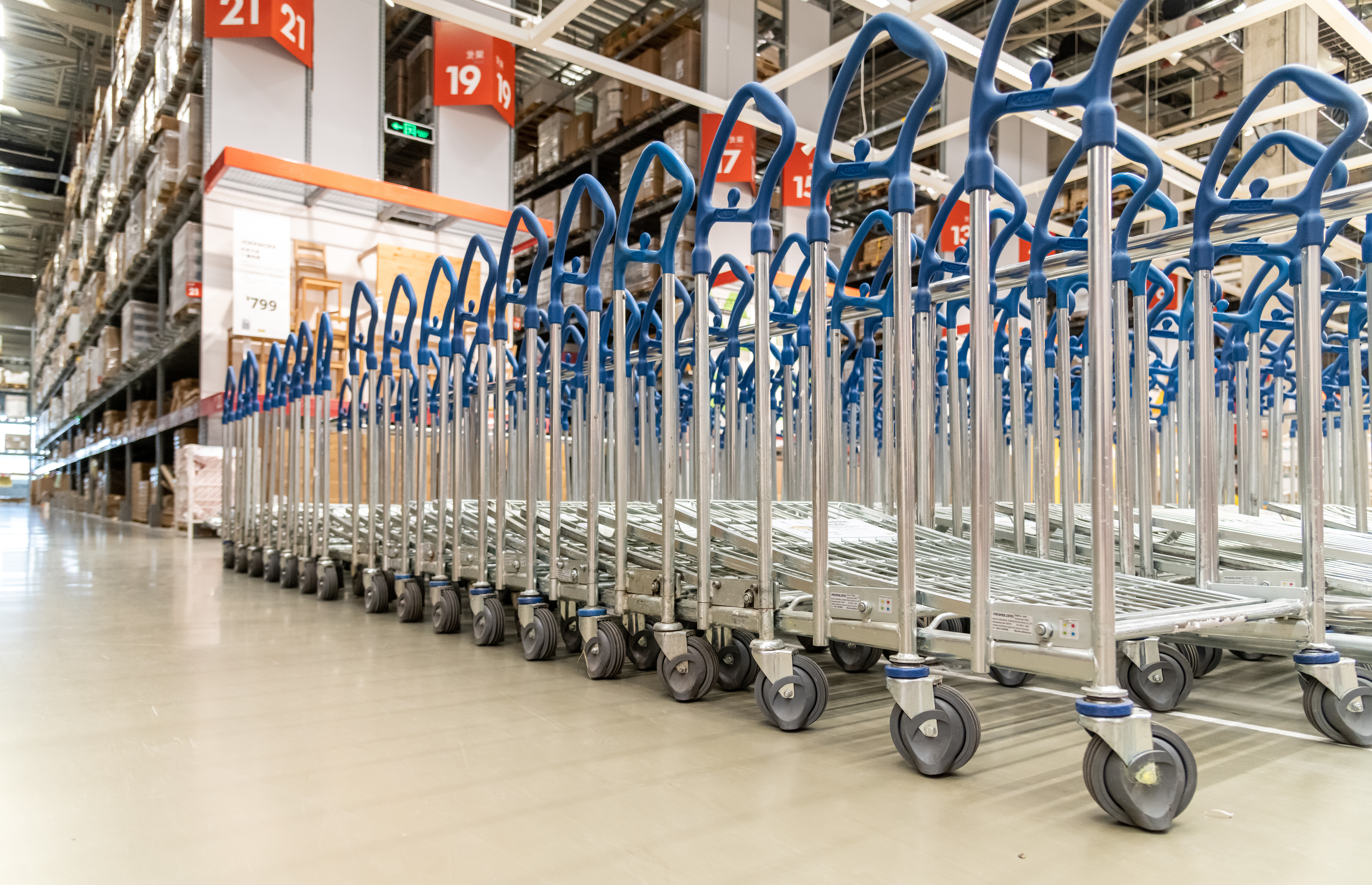In today’s fast-paced industrial and commercial environments, optimizing workplace productivity is paramount. One often overlooked yet crucial factor in achieving this goal is the selection of appropriate casters and wheels for equipment and machinery. The right caster and wheel choices can significantly impact worker safety, efficiency, and overall operational costs. This comprehensive guide aims to provide valuable insights and recommendations for choosing the ideal casters and wheels to enhance productivity across various applications.
Ergonomic Considerations
Ergonomic caster design plays a pivotal role in reducing worker fatigue, discomfort, and the risk of musculoskeletal injuries, ultimately boosting productivity. Tapered treads offer a gradual transition from the floor to the wheel, minimizing the force required to initiate and sustain movement. This feature is particularly beneficial when maneuvering heavy loads, reducing physical strain on employees by up to 30%, according to a study by the National Institute for Occupational Safety and Health (NIOSH).
Independently rotating wheels allow each wheel to rotate independently, facilitating smoother turns and minimizing the effort required to change directions. This feature is especially advantageous in tight spaces or when navigating around obstacles, reducing the risk of strain-related injuries by up to 40%, as reported by the Occupational Safety and Health Administration (OSHA).
Extended caster leads, which increase the distance between the wheel and the load, also contribute to ergonomic efficiency. By distributing the load more evenly and reducing the force required to initiate movement, extended leads can significantly reduce the physical demands on workers, leading to increased productivity and reduced fatigue by up to 25%, according to a study by the American Society of Safety Professionals (ASSP).
A prime example of the positive impact of ergonomic casters can be found in the healthcare industry. Hospitals that have implemented ergonomic caster solutions on patient beds and equipment have reported a significant reduction in staff injuries and lost workdays due to musculoskeletal disorders, with some facilities experiencing a 50% decrease in worker’s compensation claims related to patient handling tasks.
Noise Reduction
In many industrial and healthcare environments, excessive noise levels can hinder communication, concentration, and overall workplace comfort, ultimately impacting productivity. Casters play a crucial role in mitigating noise levels, and noise-reducing caster designs have become increasingly popular.
Polyurethane treads, known for their noise-dampening properties, can reduce caster noise by up to 10 decibels compared to traditional rubber treads. These treads absorb vibrations and minimize the sound generated by rolling casters, creating a quieter and more comfortable work environment. Similarly, integrated shock absorbers in caster designs can effectively reduce noise by cushioning the impact of the caster against the floor, achieving noise reductions of up to 8 decibels, according to a study by the National Institute for Occupational Safety and Health (NIOSH).
The benefits of reduced noise levels extend beyond mere comfort. In healthcare facilities, where clear communication between staff and patients is essential, noise-reducing casters can improve patient care and staff efficiency. A study by the American Hospital Association (AHA) found that hospitals implementing noise-reducing caster solutions experienced a 15% improvement in patient satisfaction scores related to noise levels.
Similarly, in manufacturing environments, reduced noise levels can enhance communication among workers, leading to improved coordination and productivity. A case study conducted by a leading automotive manufacturer revealed a 12% increase in worker productivity after implementing noise-reducing casters on their assembly line equipment.
Maintenance and Downtime Reduction
Unplanned downtime due to caster maintenance or failure can severely disrupt operations and negatively impact productivity. Consequently, selecting low-maintenance, durable caster solutions is crucial for minimizing downtime and reducing operational costs.
Sealed precision bearings are a game-changer in this regard. These bearings are designed to be maintenance-free, as they are protected from contaminants and do not require regular lubrication. This not only reduces the need for frequent maintenance but also extends the lifespan of the casters by up to 50%, according to a study by the Bearing Specialists Association (BSA).
Kingpinless caster designs eliminate the need for a traditional kingpin, which is a common point of failure in conventional casters. By removing this potential weak point, kingpinless casters offer increased durability and reduced maintenance requirements, with some manufacturers reporting a 75% reduction in caster replacements.
Corrosion-resistant finishes, such as zinc or chrome plating, are also essential for casters operating in harsh environments. These finishes protect the caster components from corrosion, extending their lifespan by up to 30% and reducing the need for frequent replacements, as reported by the American Galvanizers Association (AGA).
A prime example of the benefits of low-maintenance casters can be found in a case study from a large manufacturing facility. After implementing sealed precision bearing casters and kingpinless designs, the facility reported a 60% reduction in downtime due to caster maintenance, resulting in increased productivity and cost savings of over $250,000 annually.
Load Capacity and Floor Protection
Selecting casters with appropriate load capacities is crucial to prevent overloading and potential damage to both the casters and the floors. Overloaded casters can lead to premature wear, increased maintenance requirements, and even safety hazards. According to the Material Handling Equipment Distributors Association (MHEDA), casters operating at or above their rated load capacity can experience a lifespan reduction of up to 75%.
When choosing casters, it is essential to consider factors such as shock loading, which occurs when a load is dropped or impacted onto the casters. Casters designed to withstand shock loading can prevent damage and ensure continued safe operation, reducing the risk of caster failure by up to 60%, as reported by the Industrial Truck Association (ITA).
Uneven surfaces and environmental conditions are also important considerations. Casters designed for use on rough or uneven floors, or those with treads suitable for specific environments (e.g., high temperatures, chemical exposure), can help prevent damage and ensure optimal performance, extending the caster lifespan by up to 40%, according to a study by the National Floor Safety Institute (NFSI).
Protecting floors from damage is another critical factor in caster selection. Tread materials like polyurethane, which is known for its floor-protecting properties, can prevent scratches, indentations, and other forms of floor damage, ultimately reducing maintenance costs and extending the lifespan of the flooring by up to 50%, as reported by the Resilient Floor Covering Institute (RFCI).
A notable example of the importance of load capacity and floor protection can be found in a case study from a large distribution center. After implementing casters with appropriate load capacities and polyurethane treads, the facility reported a 70% reduction in floor damage, leading to lower maintenance costs and improved operational efficiency, resulting in an estimated annual savings of $150,000.
Industry-Specific Considerations
While the general principles of caster selection apply across various industries, certain specialized environments have unique requirements that must be considered. In the healthcare industry, casters must comply with strict standards and regulations, such as IEC 60601 for medical equipment.
Braking mechanisms are often a crucial requirement in healthcare settings, ensuring the safe and controlled movement of equipment like patient beds or diagnostic machines. Casters with reliable braking systems can prevent accidents and enhance patient safety, reducing the risk of equipment-related incidents by up to 80%, according to a study by the Association for the Advancement of Medical Instrumentation (AAMI).
In manufacturing environments, casters may need to withstand exposure to harsh chemicals, extreme temperatures, or heavy-duty applications. Selecting casters with appropriate wheel diameters and tread materials designed for these conditions is essential for ensuring optimal performance and longevity. For example, casters with larger wheel diameters and heat-resistant tread materials can extend their lifespan by up to 60% in high-temperature environments, as reported by the American Society of Mechanical Engineers (ASME).
Compliance with industry standards, such as ISO 22881 for casters and wheels used in industrial applications, is also crucial in manufacturing settings. These standards ensure that the casters meet specific safety, performance, and durability requirements, reducing the risk of caster-related incidents and downtime by up to 40%, according to the International Organization for Standardization (ISO).
A prime example of industry-specific caster selection can be found in a case study from a leading pharmaceutical manufacturer. By implementing casters that met the stringent requirements of the pharmaceutical industry, including chemical resistance, cleanroom compatibility, and compliance with FDA regulations, the company was able to enhance productivity by 25% while ensuring compliance with industry regulations and minimizing the risk of contamination.
Conclusion
Selecting the right casters and wheels is a critical factor in enhancing workplace productivity, safety, and efficiency. By considering ergonomic factors, noise reduction, maintenance requirements, load capacities, floor protection, and industry-specific needs, businesses can optimize their operations and create a more productive work environment.
It is essential to consult with experts or conduct thorough research to ensure that the selected casters and wheels meet the specific requirements of your application. Additionally, staying up-to-date with the latest advancements and industry best practices can help you make informed decisions and maximize the benefits of your caster and wheel investments.





